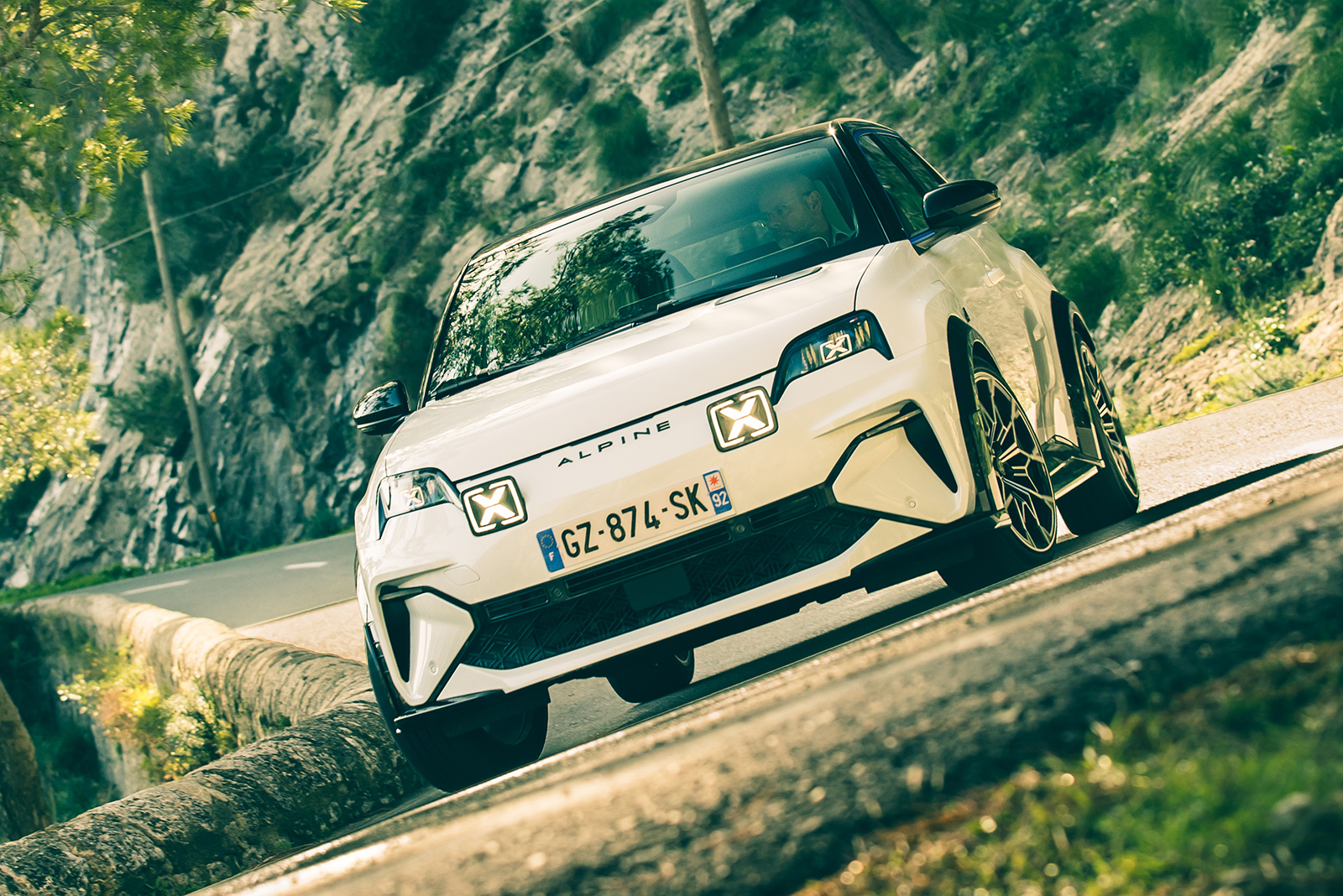We’ve tried the A290 on both road and track. And it’s not often that an EV maker will expose one of its cars to extended track use, but Alpine is keen to extol the virtues of the A290 as a hot hatchback and, remember, these are the people that as Renaultsport used to make the best hot hatches in the business.
To the road first, though, and the A290 is a good thing. The ride is relatively calm, treading a line somewhere between that of an Abarth 500, which is tied-down comically, and an Ioniq 5 N, which rides more flatly but is also considerably bigger, more expensive and around 700kg heavier. The A290 is at ‘about right’ levels for a daily driver, which means it’s less focused than, say, old Clios and later Meganes used to be. Instead I’d say it finds Golf GTI levels of compliance and control; perhaps a bit loose in extremes on loose surfaces but with agreeable comfort instead.
Dampers aren’t adjustable but the pivot point of the car sort-of is depending on the drive mode. The A290 can brake an inside rear wheel to assist turn-in, but whatever drive mode you’re in (save, normal, sport or personal) it feels respectably agile. The centre of gravity is low, so even if it is several hundred kilos heavier than a Clio, it turns well.
The steering is relatively light, accurate, linear, and while you don’t get loads of feel at road speeds, it does offer mechanical interaction because it’s tugged around under power. Tweaking a front inside wheel brake to enhance traction while cornering isn’t a new thing, but Alpine have tuned the system to the extent that you can accelerate mid-corner and find you get additional turn-in, rather than it scrubbing wider. The early Ford Focus RS used to do that, albeit even more heavily than this. Later Renault Meganes (like the Focus RS and I think the Vauxhall Astra VXR too) used an additional steering knuckle on the front struts to reduce the distance between the turning centre and the wheel centre – which is the levering distance over which torque steer operates. The A290 doesn’t get these, but if the system were to have any more power, and the chassis could take it, it might need them.

